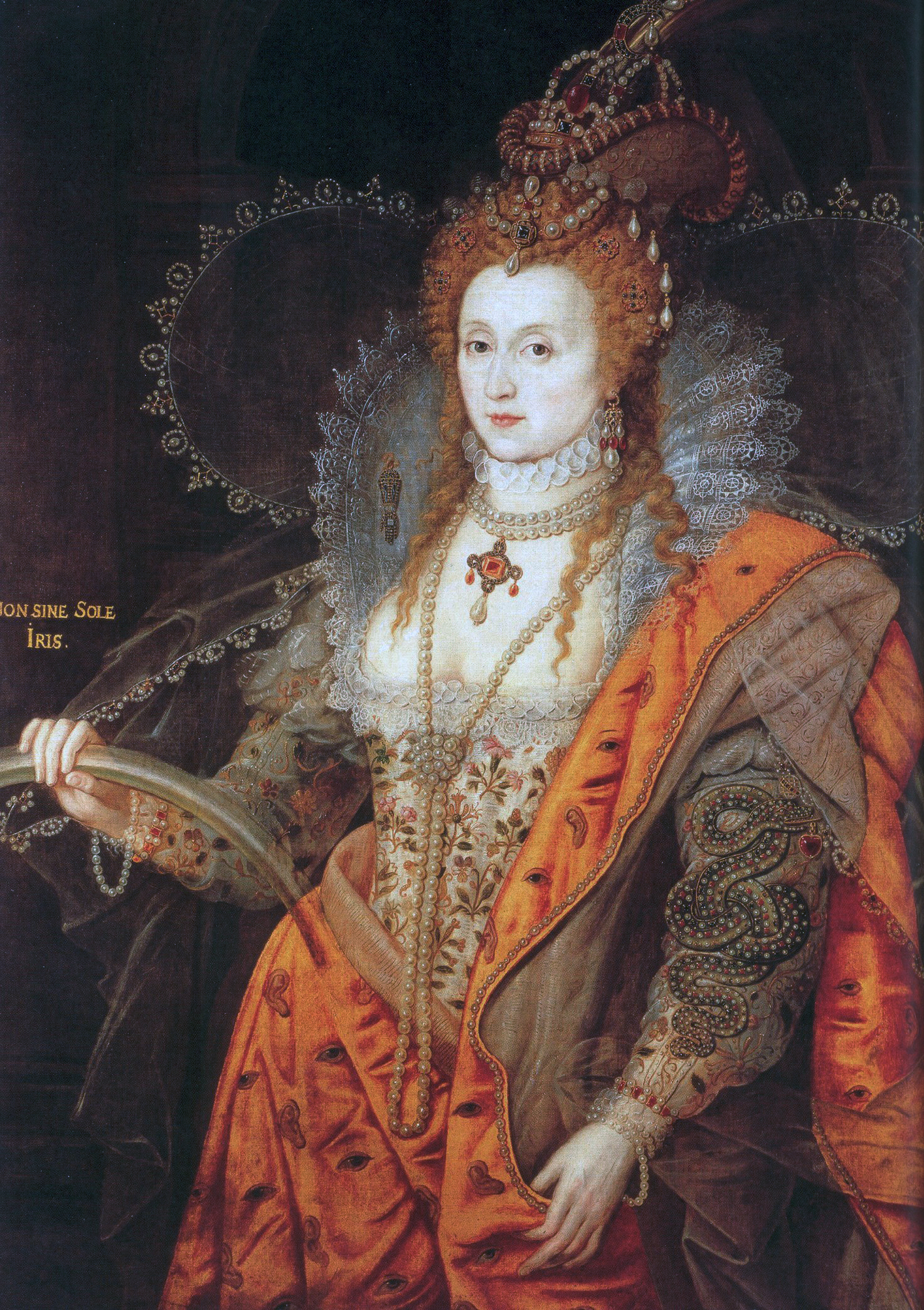Author branding: Like Good Queen Bess
/Part 4 in series on personal branding
 Sometimes called Good Queen Bess, Gloriana, or The Virgin Queen, the second daughter of Henry VIII became Queen Elizabeth I of England at the age of 25. She quickly and masterfully defined herself in the eyes of her people -- that is, she established her personal brand.
Sometimes called Good Queen Bess, Gloriana, or The Virgin Queen, the second daughter of Henry VIII became Queen Elizabeth I of England at the age of 25. She quickly and masterfully defined herself in the eyes of her people -- that is, she established her personal brand.
At a disadvantage from the beginning because she was female, protestant, and the daughter of the executed Anne Boleyn, she was also coming into power after the death of her half-sister Mary, aka "Bloody Mary." Elizabeth needed to establish a firm base of power that her courtiers and her people could respect and accept. In her case, facing the likelihood of Catholic assassins, a strong personal brand was truly a matter of life or death.
Values and positioning
Elizabeth had been in training for royalty for a long time. She knew what she wanted: Increased world trade, supreme naval power, religious unity, and economic prosperity. She didn't care for war, but did not shrink from it in order to protect and defend her power and her nation.
To those ends, Elizabeth not only created a powerful persona, but also "positioned" herself as a strong and just ruler, a most noble and formidable king in a gentle woman's body.
Positioning is a way to define yourself to your audience in a positive and memorable way, while differentiating yourself from your competitors or predecessors.
If I were to quickly write Queen Elizabeth's positioning statement, first I would beg forgiveness at being so bold and admit a royal positioning statement would require a lot of serious thought and development time. That said, it might go something like this:
For the people of England, France and Ireland, we (the royal we) descend under divine right from Britain's greatest monarchs, to establish peace, religious unity, international trade and naval dominance, and to maintain their well-being, security and prosperity.
- Elizabeth based her claim to the throne first on history, descending from the Trojans, linking to King Arthur and Henry VIII. This history and provides the background to her many symbolic portraits, and to this she added color choices, iconography, and especially consistency.
- Elizabeth did not care to sit for portraits so eventually artists were given "approved" facial forms to paint from, adding to the consistency and agelessness of her persona.
- She preferred white gowns to emphasize her fair skin and bright hair, and augmenting her image of purity. Her courtiers wore miniatures of her to show their devotion, and had their own portraits painted wearing Elizabeth's colors – black, white, red and gold. (At the time, red and black dyes were difficult to obtain and process, so they were restricted to the wealthy.)
- In addition to portraits, Elizabeth's persona was communicated (and sometimes created for her) through poetry, drama, music and architecture.
Power of Portraits
Elizabeth had no advertising or social media to broadcast her message, so of course portraits were the best way to establish her persona. After the defeat of the Spanish Armada in 1588, a famous portrait (above) shows her with the ships in the background and her feet upon a map of the world. Her hand rests on a globe below the crown, her fingers cover the Americas, indicating England's plans for expansion , and she is flanked by two columns suggesting her history. In the background the ships are driven to dark destruction while Elizabeth enjoys the sunlight.
“Elizabeth’s savvy in regard to managing and manipulating public opinion was substantial. She spent lavishly on gowns, jewels, portraits and royal progresses, whistle-stop horseback tours of her domain that let her see and be seen. Her skill with rhetoric, both visual and verbal, was undisputed, as in the legendary speech delivered to her troops on the eve of the Spanish Armada. The queen, dressed in an Athenalike white gown and silver breastplate, told her men, 'I have the body of a weak, feeble woman, but the heart and stomach of a king—and of a King of England too.’” --Hanne Blank Virgin, The Untouched History
In what is known as "the pelican portrait" she wears pearls indicating purity, the Tudor rose indicating unity, and a pendant that shows a pelican mother caring for her young. In Elizabeth's time, mother pelicans symbolized self sacrifice of mothers to care for their young, and as an icon represented Elizabeth as mother and protector of her Protestant nation and her subjects.
As Elizabeth aged and determined that she would never marry, she became famous for her virginity -- even though many believed she'd had a long-term love affair with Robert Dudley, Earl of Leicester. She was celebrated as The Virgin Queen in the portraits, pageants and literature of the day.
Virginity was a courtly ideal. In younger days Elizabeth's virginity had represented her purity, innocence and chastity, making her a perfect bride for some wealthy prince. As she aged and all suitors were refused, her virginity was spun into a maternal sacrifice of herself for her country and her people, lending an air of holiness to her reign.
Elizabeth was also immortalized by the poet Edmund Spenser in his epic The Faerie Queen, where she was represented as a goddess and the embodiment of beauty and virtue. In reality, about this time her skin had been damaged by small pox, she'd lost much of her hair, and had to wear wigs and heavy makeup. Still, her gowns in some portraits are magnificent constructions of high shoulders and great wings. The Rainbow Portrait, painted when Elizabeth was in her 60s, is actually one of her sexiest, with her white floral bodice, her loose hair and elaborate headdress, a mantle draped over one shoulder, and a cloak designed with eyes and ears motif, the serpent of wisdom on her sleeve, the a rainbow with the motto "no rainbow without the sun." She reminds me of the recording artist Cher in this one: Ageless and outlandish.
In spite of many difficulties during her reign, Elizabeth remained popular with the majority of her subjects, and was praised as a heroine of the Protestant cause and the ruler of a golden age. Following her death in 1603, the date of her accession was a national holiday for 200 years.
Reason to believe
So what can be gleaned from Elizabeth's positioning in terms of personal branding?
- Your persona must support your positioning statement.
- Once developed, positioning can guide your marketing strategy and tactics to serve you for the long-term.
- The choices you make to represent your brand, such as colors, imagery and messaging, should be thoughtful and consistent, repeated again and again.
To create a good positioning statement you should (1) define your target audience, (2) include the frame of reference, as in the category or genre in which you operate, (3) articulate the benefit or unique qualities being offered and (4) give customers a reason to believe you will deliver on your promise.
Next week, part 5 of the series will focus on Louis XIV.
 Sharavogue recently won first place for historical fiction in the Florida Writers Association Royal Palm Literary Awards! You can purchase a copy from online booksellers and at the Book Loft on Amelia Island, FL. I will be presenting at the Amelia Island Book Festival Feb. 20-21.
Sharavogue recently won first place for historical fiction in the Florida Writers Association Royal Palm Literary Awards! You can purchase a copy from online booksellers and at the Book Loft on Amelia Island, FL. I will be presenting at the Amelia Island Book Festival Feb. 20-21.





